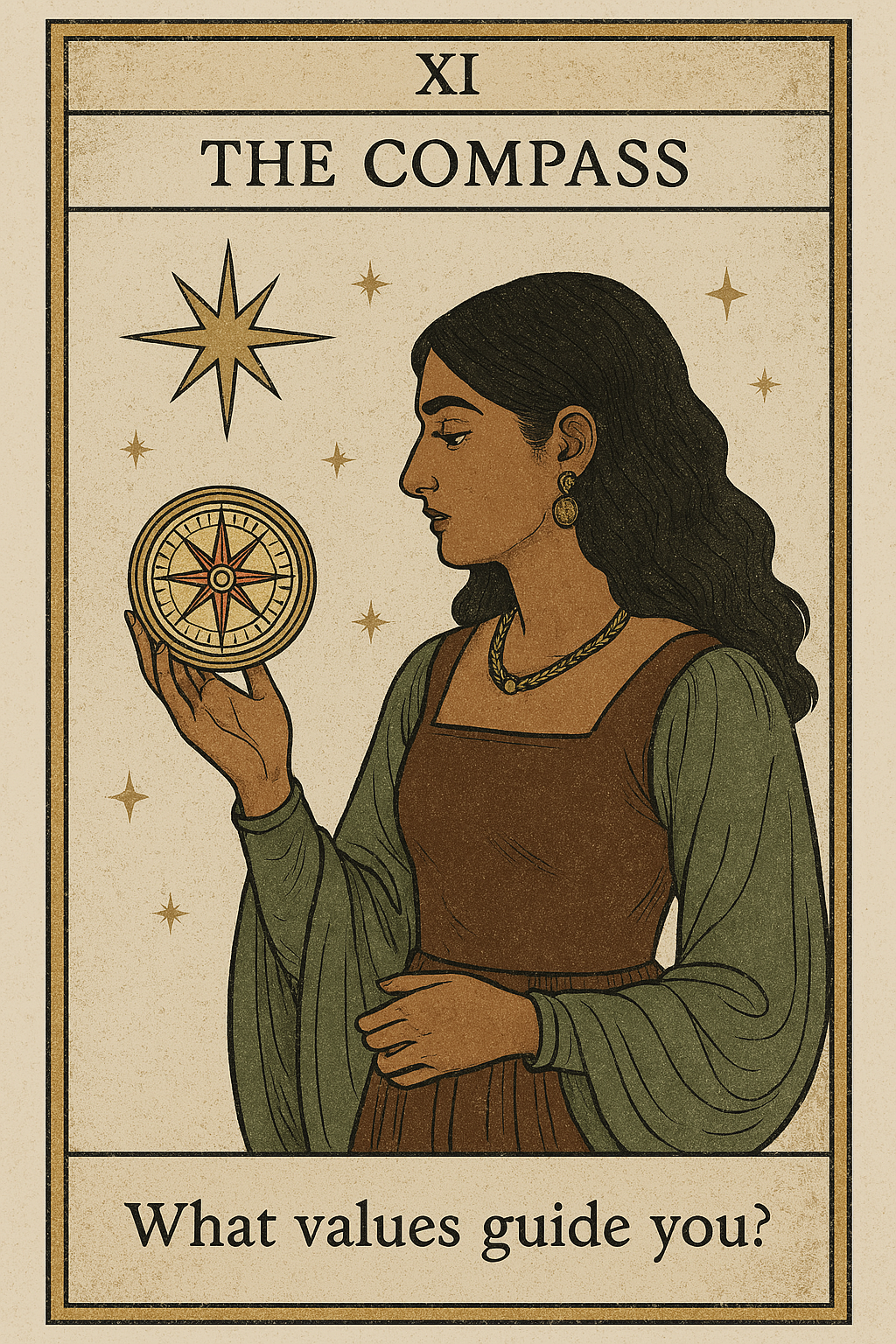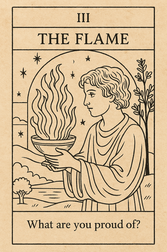Making the Most of Your Purpose Statement: Practical Implementation Guide

Why Purpose Implementation Matters
Discovering your purpose is a profound achievement, but it's only the beginning of your journey. The true power of a purpose statement emerges when you actively integrate it into your daily life, using it as a compass for decisions both big and small.
"The two most important days in your life are the day you are born and the day you find out why."
— Mark Twain
Research shows that people who actively implement their purpose experience:
- Greater resilience during challenging times
- More consistent alignment between values and actions
- Enhanced sense of meaning in everyday activities
- Improved decision-making clarity
- Stronger sense of identity and authenticity
This guide provides practical strategies to transform your purpose statement from words on a page to a lived experience that shapes your choices, relationships, and impact on the world.
Interpreting Your Purpose Statement
Your purpose statement is more than a sentence—it's a compass for how you want to show up in the world. Here's how to unpack its meaning:
Identify Key Themes
- Words to watch for: verbs (e.g., "serve," "create"), objects (e.g., "community," "growth"), and modifiers ("authentically," "mindfully").
- Action step: Highlight three to five powerful words in your statement and write a one-sentence definition for each in your own words.
Map to Life Domains
- Break your life into domains—career, relationships, health, creativity, community, etc.
- For each domain, ask: "How would living my purpose look here?" Jot down one concrete example per domain.
Connect to Your "Why"
- Remind yourself of the research foundations behind these questions: Jung's individuation, Frankl's logotherapy, and Ikigai's intersection of passion, mission, vocation, and profession.
- Reflection prompt: "If I fully embodied this purpose, why would it matter to me and to those around me?" Spend five minutes journaling an answer.
"The process of self-realisation, the discovery and experience of meaning and purpose in life."
— Carl Jung
Incorporating Your Purpose into Daily Decisions
Small choices accumulate into a purposeful life. Use these tactics daily:
Morning Alignment Ritual
- Duration: 5–10 minutes
- What to do:
- Read your purpose statement aloud.
- Visualize one decision you'll face today (e.g., a work meeting, family dinner, or choice of project).
- Ask: "Which option best reflects my purpose?"
- Real-world example: If your purpose is "to empower others through compassionate teaching," and you face a choice of reacting impatiently to a colleague's question, choose patience—and remind yourself of the impact your calm response can have.
Purpose Checkpoint Breaks
- Set a timer for mid-day and end-of-day "Purpose Checkpoints."
- At each checkpoint, ask:
- "What decisions did I make that aligned with my purpose?"
- "Where did I drift, and why?"
- Write a quick bullet list: two wins and one improvement area.
Decision-Making Filter
When facing options—big or small—use a simple filter:
- Passion: Does this energize me?
- Impact: Who benefits?
- Sustainability: Can I maintain this long-term?
If an option scores poorly on even one pillar, explore alternatives that score higher. Over time, your intuition for purpose-aligned choices will strengthen.
Exercises to Deepen Your Connection with Purpose
Building a lived relationship with your purpose goes beyond intellectual understanding. Try these hands-on practices:
Exercise 1: Purpose Montage
- Materials: paper, magazines, scissors, glue, or a digital collage tool.
- Create a visual collage of images, words, and symbols that capture the spirit of your purpose.
- Display it somewhere you'll see daily: on your desk, phone wallpaper, or bathroom mirror.
Exercise 2: Purpose Journaling Prompts
Regular journaling cements your commitment:
- Prompt A (Weekly): "Where did I feel most 'alive' this week? How does that tie to my purpose?"
- Prompt B (Monthly): "What change have I noticed in myself as a result of living my purpose?"
- Prompt C (Quarterly): "What's one big action step I can take next quarter to deepen my purpose impact?"
Exercise 3: Accountability Partnerships
- Find a friend, coach, or small group also exploring life purpose.
- Share your purpose statements and commit to monthly check-ins.
- Action step: At each check-in, discuss one success story and one obstacle. Offer mutual support and concrete suggestions.
Exercise 4: Mini-Experiments
- Draw inspiration from Stanford's Life Design: prototype different ways of living your purpose.
- Example: If your purpose involves "community-building," host a small meetup, facilitate an online discussion, or volunteer at a local nonprofit event.
- Reflect on each experiment: What felt right? What surprised you? Adjust your plan accordingly.
Addressing Common Doubts About Your Purpose Statement
Even deeply crafted purpose statements can trigger self-doubt. Here's how to navigate four frequent concerns:
| Doubt | Strategy |
|---|---|
| "Is this too ambitious?" | Break it down into micro-steps. Focus on what you can do today, then tomorrow. Celebrate incremental wins. |
| "What if my purpose changes?" | Embrace the journey. Purpose evolves with experience. Revisit and refine your statement every 6–12 months. |
| "Am I really making a difference?" | Track impact metrics—number of people you've supported, time volunteered, projects completed. Small ripples become big waves. |
| "What if I fail?" | Reframe failure as data. Each "misstep" teaches you more about what truly aligns with your purpose. Practice self-compassion. |
"Between stimulus and response there is a space. In that space is our power to choose our response. In our response lies our growth and our freedom."
— Viktor Frankl
Real-World Example: From Statement to Action
Purpose Statement: "To inspire curiosity and growth by crafting stories that connect people across differences."
1. Interpreting:
- Key themes: "inspire," "curiosity," "growth," "stories," "connect."
- Domains:
- Career: pitch a cross-cultural storytelling project at work.
- Relationships: host a monthly book club with diverse genres.
- Community: volunteer to teach writing at a local shelter.
2. Daily Incorporation:
- Morning ritual: choose one article or personal anecdote to share with a colleague that sparks curiosity.
- Checkpoint: note how many people responded with questions or reflections.
3. Deepening Connection:
- Collage: images of books, conversation bubbles, bridged communities.
- Journaling: reflect on how sharing a short story impacted someone's day.
- Experiment: organize a "story swap" evening at a coffee shop; gather feedback.
4. Handling Doubt:
- Ambition: start small—share one story per week.
- Impact: log responses in a spreadsheet; watch engagement grow.
- Evolution: after six months, refine to include multimedia storytelling.
Tips for Long-Term Integration
- Embed in Habits: Pair your purpose practice with existing routines (e.g., review your statement during your morning coffee).
- Use Technology Wisely: Set purpose-alignment reminders on your calendar; use note-taking apps to capture inspiration on the go.
- Stay Curious: Revisit the foundational questions on Pathlight periodically. New life stages reveal fresh insights.
- Celebrate Milestones: Acknowledge each step—whether finishing a journal prompt, hosting an event, or helping someone solve a problem.
Conclusion
Living your purpose is an ongoing, evolving dance between intention and action. By interpreting your statement, weaving it into everyday decisions, practicing exercises that deepen your connection, and proactively addressing doubts, you turn a powerful sentence into a vibrant way of life.
"Life is never made unbearable by circumstances, but only by lack of meaning and purpose."
— Viktor Frankl
Ready to continue your journey? Revisit your Pathlight questions, refine your purpose, and keep illuminating the world with the unique gifts only you can offer.
Additional Resources
The Complete Purpose Discovery Process
A comprehensive guide to discovering your life purpose using proven techniques and reflective exercises.
Read Guide →How to Answer Reflective Questions
Learn practical techniques for moving beyond surface-level answers to discover profound insights about yourself.
Read Guide →

